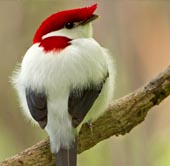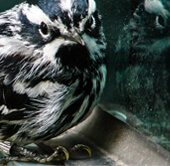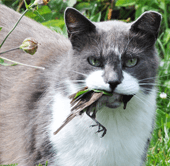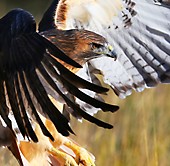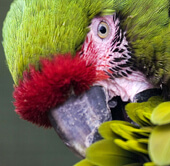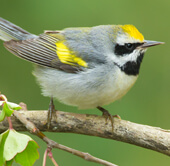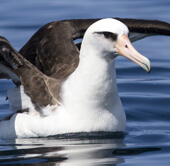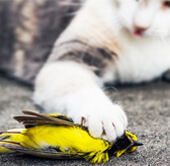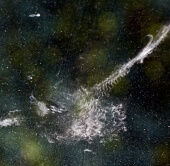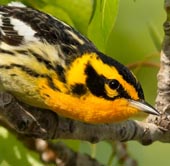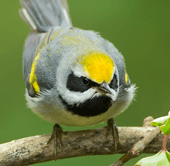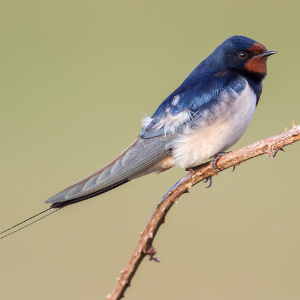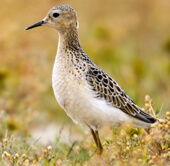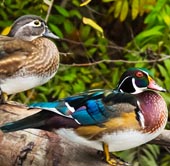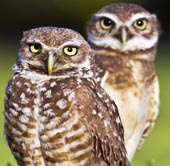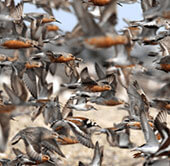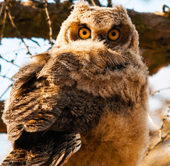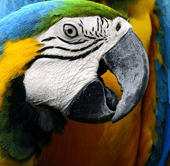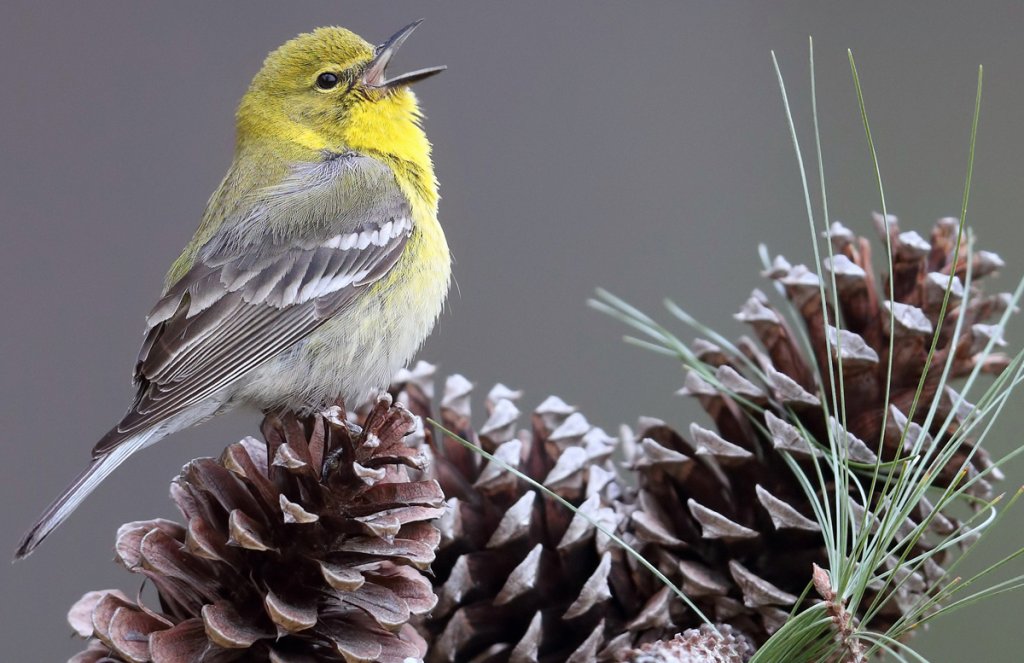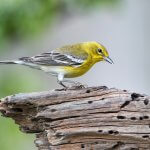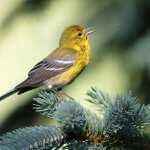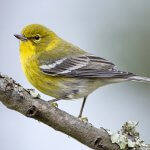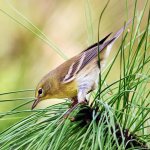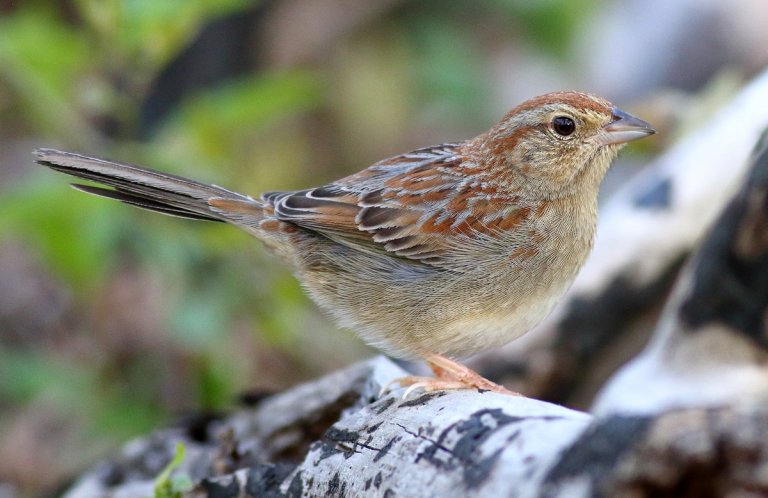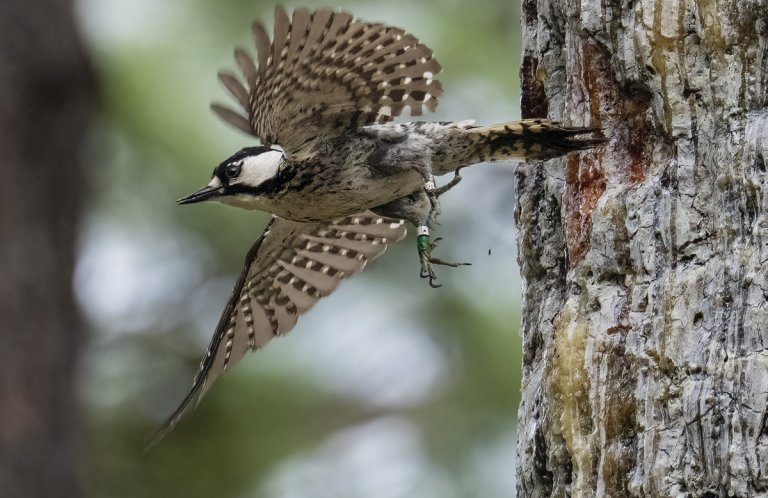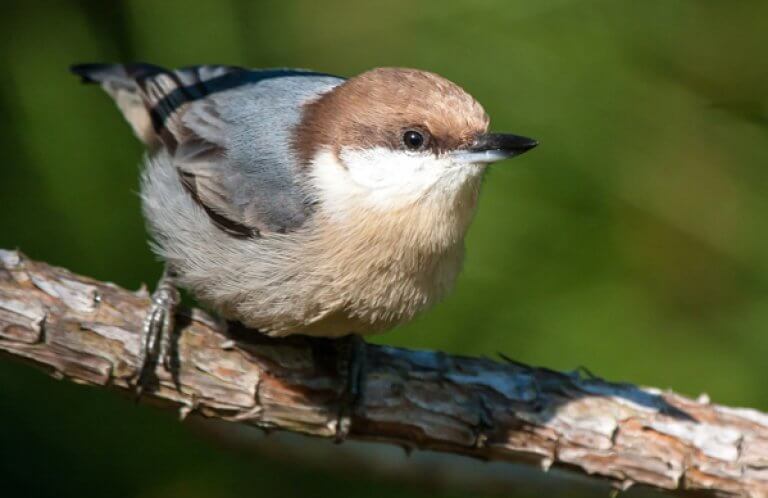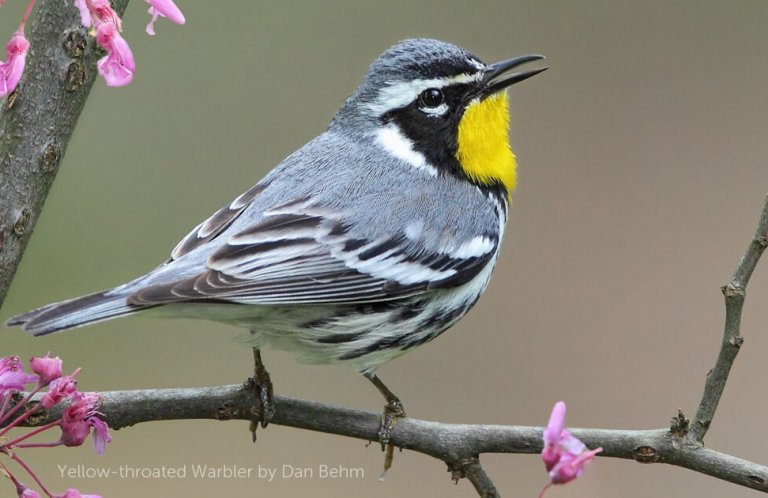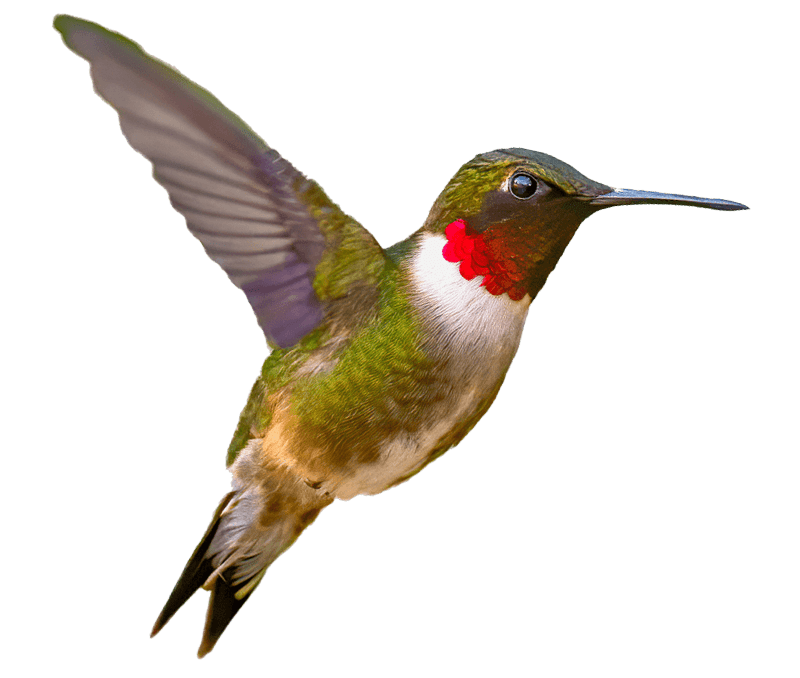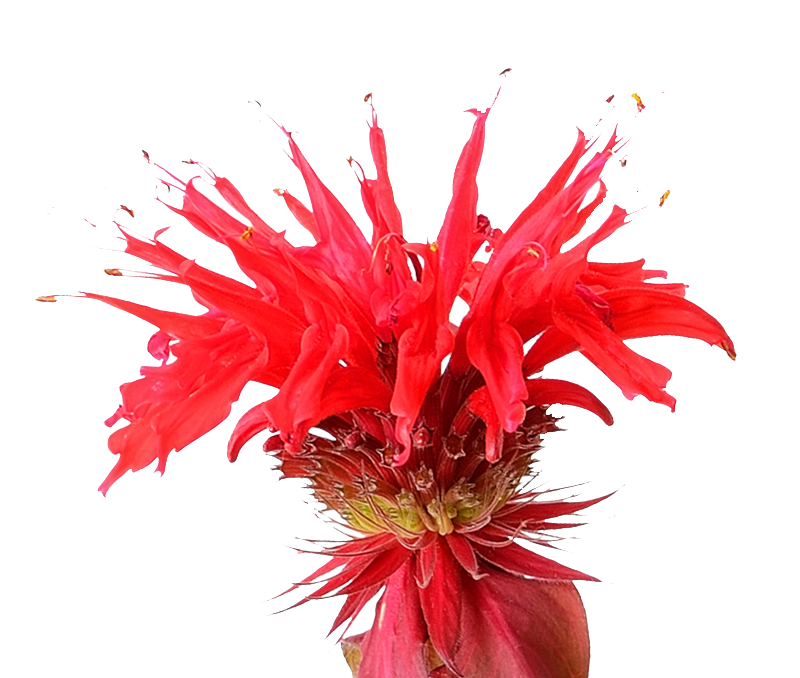About the Pine Warbler
The Pine Warbler is an aptly-named species, rarely seen away from its namesake trees, where it gleans rather sluggishly among the foliage and sings its dreamy-sounding song from the canopy.
The nominate race of this wood-warbler breeds and winters entirely within North America. (Two subspecies are resident in the Caribbean Islands.) Although other warbler species, including the Yellow-rumped Warbler and Common Yellowthroat, also winter in North America to some extent, none do so as completely as the Pine Warbler.
The Pine Warbler is able to remain in North America during the winter due to an interesting physiological adaptation.
Although primarily insectivorous, the Pine Warbler is the only North American wood-warbler that is also able to eat large quantities of seeds, particularly during the winter. In order to make the switch to a seed-heavy diet, this bird undergoes an interesting internal alteration.
Studies have shown that Pine Warblers can actually change their digestive systems depending on their diet. When feeding primarily on seeds, this bird's gizzard (the muscular part of the stomach that grinds food) enlarges, becoming more efficient at processing this harder food. This ability increases the Pine Warbler's food options during the winter season, when insect abundance decreases.
The Pine Warbler can be highly variable in appearance depending on its age and sex. Adult males are usually the brightest, with yellow throat and breast, olive upperparts, and blurry olive streaking along the sides. Yellow “spectacles” contrast with the olive face and darker cheek patch. The adult female is a more muted version of the male. Immature Pine Warblers can be confusing, as they are a drab gray/brown above with no trace of yellow.
Common ID features seen in all Pine Warblers are the white belly and undertail coverts, two low-contrast white wing bars, long tail, dark legs, and stout bill.
Bright Pine Warblers can sometimes be confused with the Yellow-throated Vireo; look for the vireo's stouter beak with a small hook. Dull fall or juvenile Pine Warblers are often mistaken for fall-plumaged Bay-breasted and Blackpoll Warblers, but can be told apart by a longer tail, contrast between darker cheeks and lighter throat, and overall lack of color.
Songs and Sounds
The song of the Pine Warbler is a variable, melodic trill that can have a slow, rather lazy cadence. This song can easily be confused with the songs of the Chipping Sparrow or Dark-eyed Junco.
Song:
Song:
Chipping Sparrow song:
Dark-eyed Junco song:
Breeding and Feeding
The Pine Warbler is the only warbler species that eats large quantities of seeds, primarily those of pines.
Maintains pair-bond (assumed monogamous) during the nesting season; more information needed on its courtship and breeding displays.
The Pine Warbler's nest is almost always sited high in a pine tree; with older, larger pines favored. These nests are usually well-concealed by pine needles or cones, and quite difficult to see from below.
The female builds her cup-shaped nest using pine needles, twigs, strips of bark, and plant stems, often bound with spider silk. It is lined with softer materials such as plant down, animal hair, and feathers.
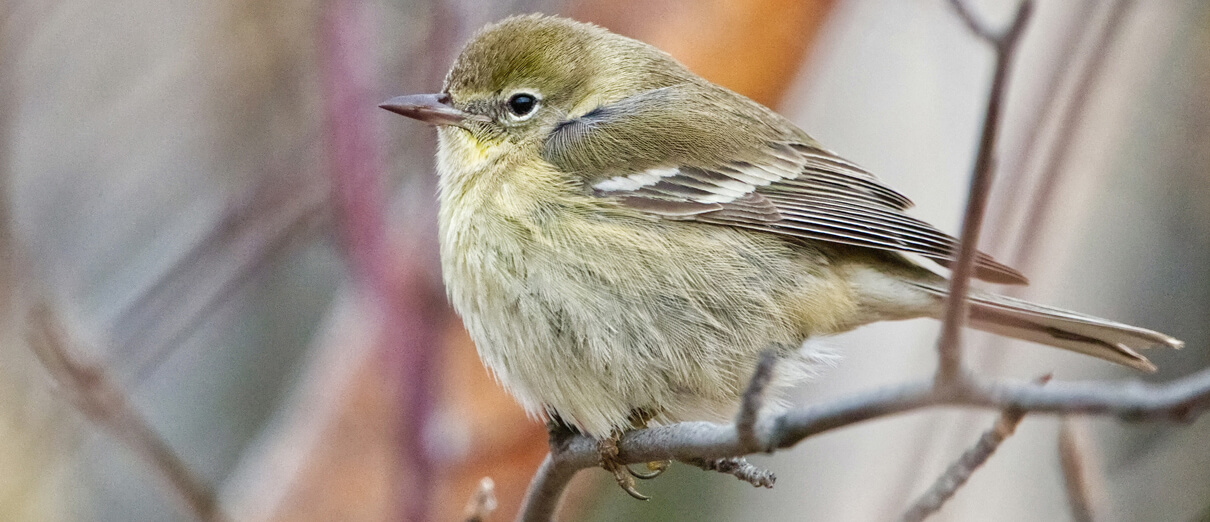
The female Pine Warbler lays a clutch of 3-5 eggs, which she incubates herself. Her mate often brings her food while she broods. Both parents take turns brooding and feeding the young after they hatch. As nests are high off the ground and well-hidden, more remains to be discovered about the timing of Pine Warbler fledging. After fledging, young and adult Pine Warblers often coalesce into small groups.
The Pine Warbler feeds heavily on insects and their eggs, caterpillars, and spiders during its nesting season. It forages in a variety of ways, hopping slowly through the tree canopy, moving up and down tree trunks in Brown Creeper-like fashion, flying out after prey, and feeding on the ground, often in the company of other species such as Dark-eyed Junco and Chipping Sparrow.
As the only warbler that eats large quantities of seeds, the Pine Warbler commonly visits bird feeders, especially during the winter. It will also take corn, peanuts, and suet.
Region and Range
Where there are pines, there are Pine Warblers!
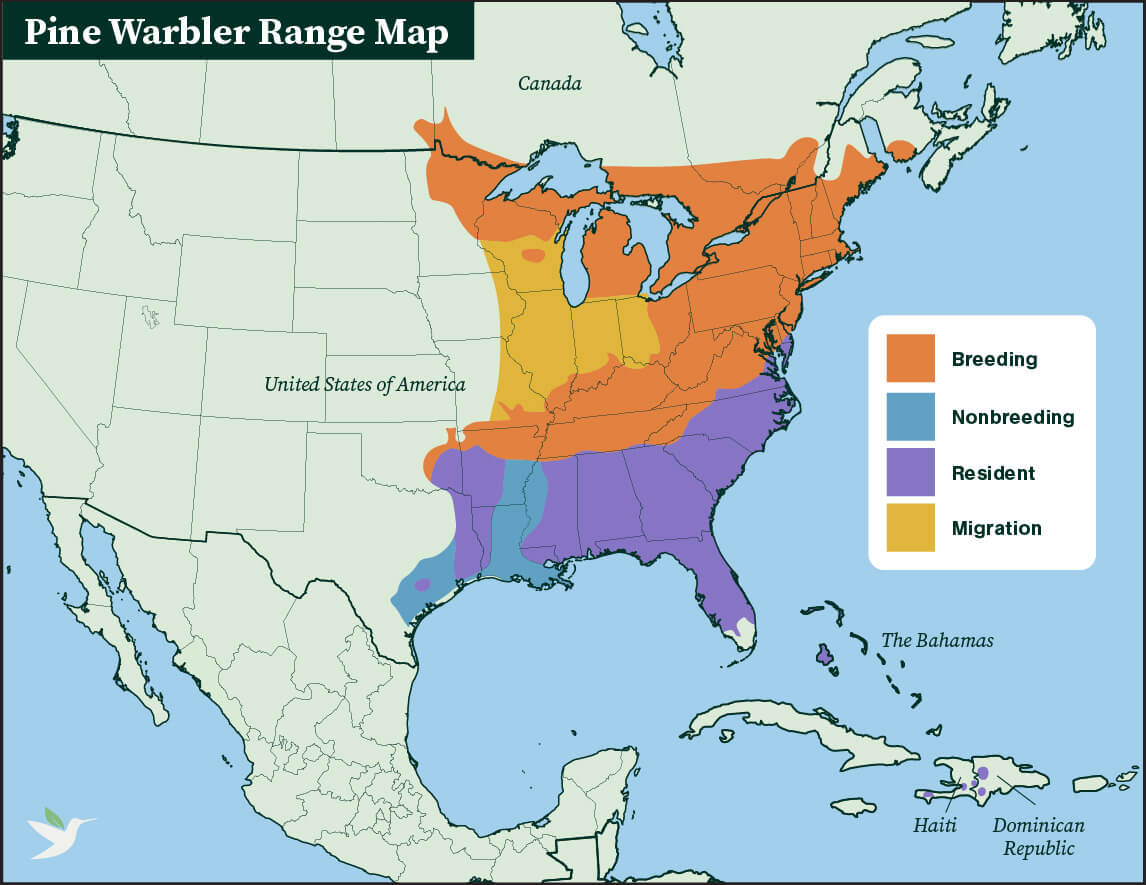
Four subspecies of Pine Warbler are recognized; only one is migratory. This migratory subspecies breeds from southern Canada and the eastern U.S. west to Minnesota, Missouri and east Texas in rather scattered populations where there is suitable pine habitat. It is absent in the prairie regions of Midwest and bottomland hardwood forests along the lower Mississippi River.
This migratory subspecies of Pine Warbler winters in the southeastern United States, where it joins birds from the resident Florida subspecies. Gregarious during migration and in the winter, when it's often seen in small flocks.
Three resident subspecies of Pine Warbler are recognized; one occurs in southern Florida, one on the northern Bahama Islands, and one on Hispaniola (Dominican Republic/Haiti).
Conservation

Help support ABC's conservation mission!
As nocturnal migrants, Pine Warblers are sometimes killed in collisions with communication towers and buildings.
Human development can remove essential pine forest habitat on this bird's breeding and wintering grounds.
Pine Warblers can be affected by pesticide spraying for tree diseases and insect infestations.
Get Involved
Policies enacted by the U.S. Congress and federal agencies, such as the U.S. Fish and Wildlife Service, have a huge impact on migratory birds. You can help shape these rules for the better by telling lawmakers to prioritize birds, bird habitat, and bird-friendly measures. To get started, visit ABC's Action Center.
Living a bird-friendly life can have an immediate impact on migratory birds in the United States. Doing so can be as easy as adding native plants to your garden, avoiding pesticides, and keeping cats indoors. To learn more, visit our Bird-Friendly Life page.
American Bird Conservancy and our Migratory Bird Joint Venture partners have improved conservation management on more than 8.5 million acres of U.S. bird habitat — an area larger than the state of Maryland — over the last ten years. That's not all: With the help of international partners, we've established a network of more than 100 areas of priority bird habitat across the Americas, helping to ensure that birds' needs are met during all stages of their lifecycles. These are monumental undertakings, requiring the support of many, and you can help by making a gift today.

